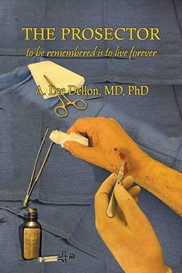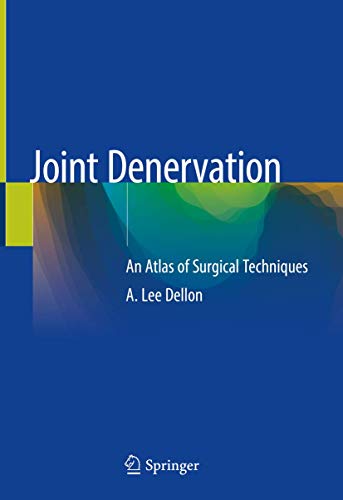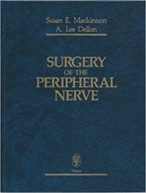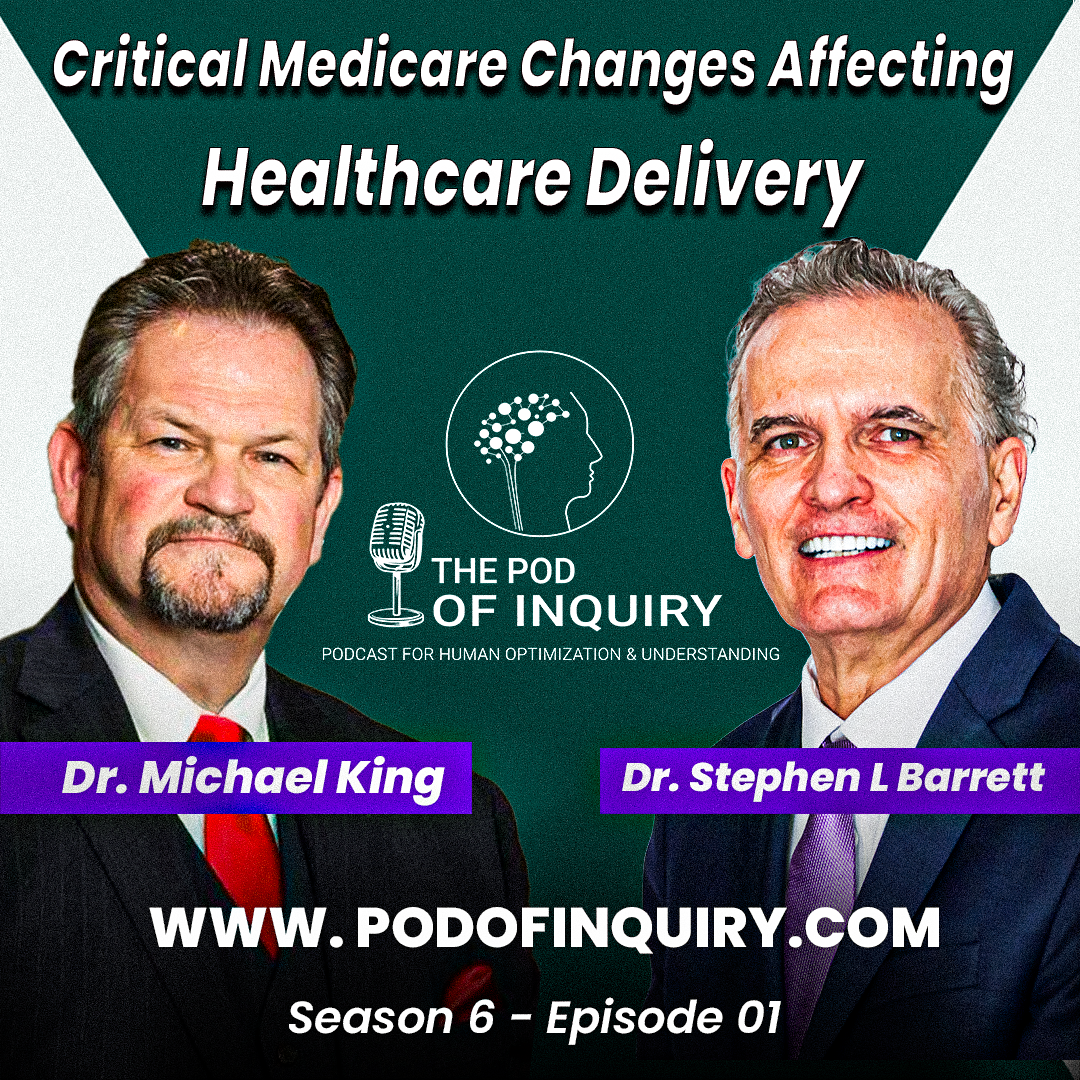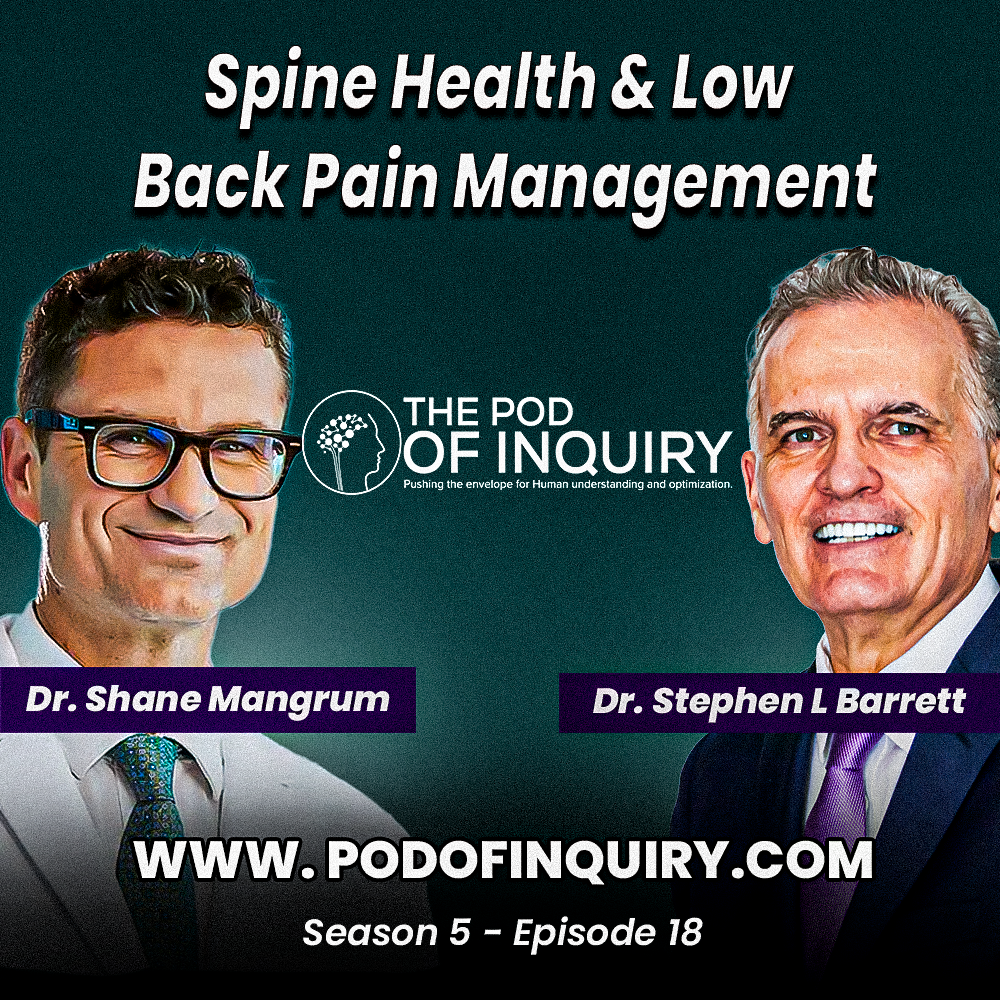This week’s episode is a continuation of my really fun conversation with Dr. Dellon. If you have not listened to Part I, go back and check it out. Lot’s of fun nerve stuff! You’ll love his novel: The Prosector. Looking forward to having you listen to one of the absolute Titans of peripheral nerve surgery.
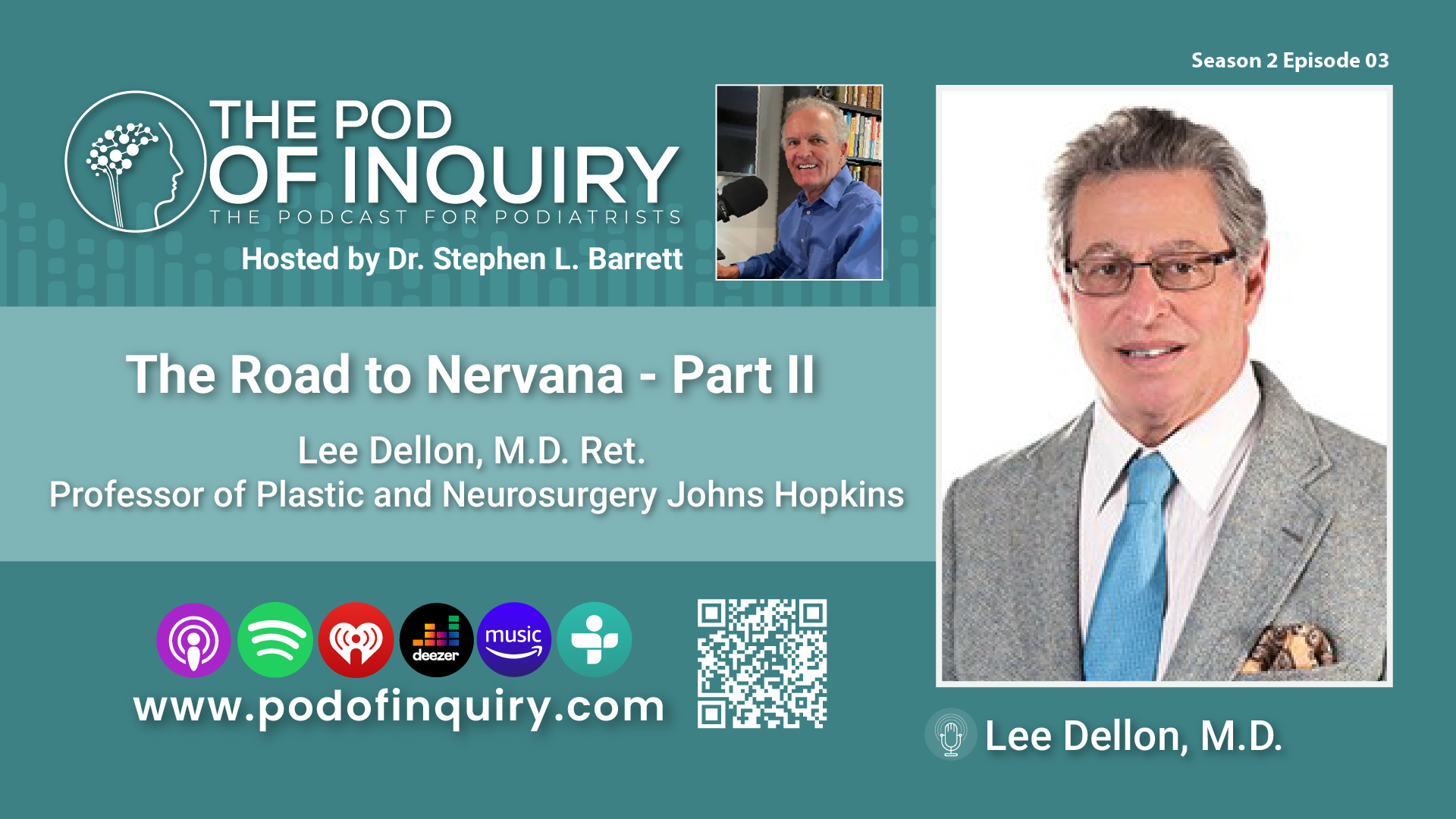
Dr. Barrett 02:38
- The peripheral nerve world should be put on the map.
- That’s what Olivia did in the book was go to the lab, because this poor patient still had pain.
- She knew about the ilioinguinal but not the iliohypogastric
- They're near each other and come from the same place in the spinal cord
- They are about an inch apart down in the region of the groin
- Usually the surgery gets both of them involved in scarring
- If you only remove one of them, the people really don't get better; you have to do both.
- Dellon identified that wrist pain could be due to nerves to the wrist joint.
- There really are two nerves in the hand, just the way they're two nerves in the groin.
- David Cornblath did a great job evaluating diabetes in these monkeys.
- He worked against Dr. Dellon at John Hopkins, because he wrote a paper that was co-authored with several other prominent people around the country
- He said that you should NOT operate on diabetics with peripheral neuropathy; Dr. Dellon says you should operate on people with peripheral neuropathy
- This is their comorbidity; it's their underlying problem
- People have cancer and are treated with chemotherapy and then have neuropathy because of the drug.
- We operate on their nerves and decompress them for chemotherapy neuropathy
- It has nothing to deal with the original cancer
- The diabetics are still diabetics, they still have a neuropathy, however you'd like to define that.
About six months ago, one of Dr. Dellon’s main critics in neurology, who has since retired, has come to realize that Dr. Dellon was correct; the critic won't go public and say it. [06:58]
- There's another very famous neurologist who said over their dead body would a diabetic ever have a nerve decompressed in the lower extremity in their University Hospital.
- Gary Reinl, who talked about the rice protocol, Rest, Ice Compression, Elevation, which is so deep and entrenched in every specialty to almost every person.
- Mirkin, who came up with that, said he just made that up, but the science really wasn't there.
- Going forward, Dr. Dellon have come to grips with the fact that where he should be going is not trying to change entrenched critics, but rather to try to educate the public
- He has had a wonderful fortune to work overseas in Europe and teach people outside of America
- They are much more open to this concept of operating on nerves and diabetics
- Neurology has a stranglehold over the criteria for surgery reimbursements
- 20 years ago, Medicare refused to pay for a hand surgeon to operate on carpal tunnel, unless there was an electrical test to prove.
- They subsequently modified it.
- The standard of care for diabetics used to be needing an electrical test each year and neurologists make between $1500-3000 doing these complicated tests.
- Now the standard of care for the American Diabetes Association is diabetic should have one test in their lifetime to show that they have it under.
- So the neurologists little by little are having to release this hole they've had on allowing a surgeon to make a decision with their patient when they can and when they can't do their surgery.
The Test Tickle [13:00]
- After Dr. Dellon operates on a patient, he brings the patient’s partner in the recovery room.
- He tells them that at home, they put their fingers inside the bandage and tickle the bottom of the foot hard and see if the patient laughs
- This is a new medical examination technique.
- This is to see if sensations come back by putting your fingers in the bandage and rubbing them on the bottom of the foot.
- You can go to YouTube and type in test tickle and you'll see Dr. Dellon doing this on a patient with them laughing in the recovery room.
The paradigm is shifting now with diagnostic ultrasound being implemented more routinely in patients that come in with heel pain [13:57]
- The literature tells you almost everything is plantar fascia as the pain generator
- Within 30 seconds after looking at them with an ultrasound, their plantar fascia is or is not affected.
- If it's not, it’s usually going on with the medial calcaneal nerve
- Dellon published a paper about the different anatomy of the medial calcaneal or branches
- No one talked about a specific anatomical tunnel for that nerve or nerve branches.
- A study by Rose and Malay looked at all the people that came in with perceived diagnosis of plantar fasciitis
- About 70% of people that came in with heel pain had some multiple pain generation with a segment of that being the medial calcaneal nerve.
- If the patient gets out of bed in the morning and their first step hurts is because the plantar fascia which is contracted at night pulls on the calcaneus and they get pain.
- That’s in comparison to people who have heel pain, where they wake up in the morning and their heel doesn't hurt them, but they develop heel pain and numbness during the day.
- The history is really important.
- Just like everything else, some people might have both.
- One of the ways in pain is something we have trouble measuring.
- If the tibial nerve to the bottom of the foot, and the calcaneal nerve to the skin of the heel are compressed, you have decreased sensation.
- The study in the Philadelphia College of Podiatry use the pressure specified sensory device
- About half of their patients who came in with pain in their heel at abnormal sensation in their heel
- Another 25% at abnormal sensation in their big toe and their heel combined
- The people presenting problems with a nerve may be related to swelling around the inflamed fascia.
- We no longer think there's really inflammation in the fascia.
- It's very important to distinguish between compressed medial calcaneal nerve.
- There’s a lot of anatomy variations and ultrasound has been a good way out of this.
- The cut off numbers for whether they do or don't have plantar fasciitis by the thickness of the plantar fascia.
- Zone B - where the fascia just anterior to where it is with relationship to the calcaneus;
- Normal would be 4 mm or less.
- What's also important is the signal intensity- as the fascia degenerates, it becomes hypoechoic because of mucoid deposition in there.
- That's where they've identified a lot of the nociceptive molecules; where why something that you inject may help even though it's not an inflammatory process.
- You have to look at the signal intensity, the quality of the tissue, and thickness of the tissue.
- Some of these newer machines can actually put the transducer on and it can measure the strain of that particular tissue.
- The elastography is going to be able to give us a little bit of insight from a regenerative standpoint.
- Multiple etiology heel pain syndrome or MEHPS for short
Our eminence is analogous to the heel. [21:16]
- The median nerve is similar to the tibial nerve
- The tunnel for the medial palmer cutaneous nerve is similar tunnel for the medial calcaneal nerve.
- One of the biggest problems in teaching foot and ankle surgeons was by Baxter
- His famous phrase is that the nerve causing this problem is the first branch of the lateral plantar nerve.
- Baxter's nerve is a nerve to the periosteum from which the plantar fascia is originating.
- In tennis elbow, you get multiple little tears in the periosteum that gives origin to the tendons that helps you do your backhand.
- The orthopedic surgeons would only focus on contractures in the tendon
- They would cut all the extensor tendons from the bone and let it slide.
- Some of them removed the lateral humeral epicondyle
- The pain was due to small neuromas from where the periosteum kept being torn.
- Applying that to the medial calcaneal tubercle, there has to be a nerve going to the periosteum.
- If the plantar fascia keeps being stretched and tearing in the periosteum there, that pain message is going in a little branch that ultimately does become part of the lateral plantar nerve.
- The medial calcaneal nerve goes to the skin and then following the lateral plantar nerve down.
- There may be other branches that are going to the skin.
- The periosteal branch, that Baxter calls his nerve, may be the second or third branch.
- It's almost never the first branch of the lateral plantar nerve.
- Baxter's operation says he's decompressing this nerve, but he's really dividing the nerve.
- This is similar to the tennis elbow, we found the nerve that goes to the lateral humeral epicondyle and disconnect it; the tennis elbow pain is gone
- They get better because with plantar fascia, people say you have to remove the spur; but that’s just false.
- The spur is a compensatory mechanism by the human body to increase area so that the shearing force is less
- They got better, not because the spur was taken out, but because they had to cut the plantar fascia to get the spur up.
Dr. Dellon was giving a lecture at some university in Texas on diabetic neuropathy. [27:07]
- There was a white haired orthopedic surgeon sitting in the front row.
- When Dr. Dellon finished, the surgeon asked why they should believe anything he said because Johns Hopkins ruined Joe DiMaggio’s baseball career.
His biographies show him on a pair of crutches and a camelhair coat leaving the front of the Johns Hopkins Hospital after they operated on him there for his heel pain; he never ever again.
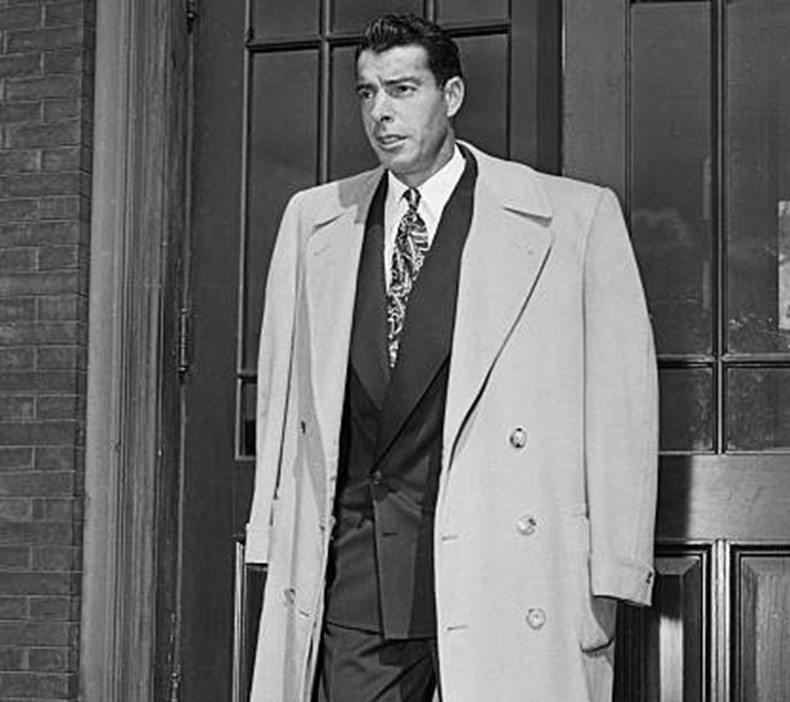
- One of Dr. Dellon’s residents went down into Johns Hopkins Hospital and exhumed the actual chart for Joe DiMaggio.
- What happened was that the most famous sports medicine doctor in New York removed his medial calcaneal tubercle and the incision was a horseshoe shaped incision or Griffith’s incision.
- He raised a distally based flap of the heel and the entire flap died.
- Joe DiMaggio came to Johns Hopkins to have his heel reconstructed, it had nothing to do with his heel pain.
- He had a lot of dead tissue that had to be degraded
- The plastic surgery group skin-grafted his heel
- He played baseball for two more years after he left Johns Hopkins Hospital.
- There are still some surgeons doing that procedure today; they've just destroyed one of the most intricate biomechanical mechanisms that we have this this infer calcaneal fat pad is extraordinary for what it does.
Roegholt published all of Baxter's nerve way back in 1938-1939. [30:07]
- Another podiatrist published identifying this nerve in 1980-1981 and suddenly it becomes Nick Baxter's nerve.
- I feel like Baxter kind of hijacked stuff from Roegholt.
- The same thing happened in Morton's.
- An anatomist in Italy identified the Morton’s entrapment.
- He gets no credit for it even though he's written 10 years earlier.
- Tinel described his sign in 1918 in France
- Paul Hoffman described it in 1918 in German
- The Germans had just lost World War I and people didn't want to translate the German papers
- People just didn't know that Paul Hoffman had made the same discoveries as Jules Tinel.
- Morton’s neuroma?
- 50,000 nerves are sacrificed each year for Morton's neuroma in America.
Dr. Dellon published two papers on recurrent Morton's neuroma [34:06]
- There was a very high correlation with patients that had failed Morton’s surgery.
- A very large percentage demonstrated true tarsal tunnel.
- A runner from the University of Maryland had a Morton's neuroma removed between his first, third, and fourth toes.
- He had pain in the bottom of his foot and he couldn't run.
- No one wanted to operate on the bottom of his foot because he was a runner.
- We can operate safely on the bottom of the foot of a runner if we're careful we close it properly.
- Dellon had worked out earlier with Dr. MacKinnon in 1982
“If you took the live end of a nerve, after removing the neuroma, and dive into the nerve and muscle in a quiet place, you could prevent these recurrent, painful neuromas.”
- In the bottom of the foot, no matter where you tried to move this nerve, you would still be putting pressure on the plantar aspect of the foot
- The only place you could put the nerve where there would be no pressure was in the arch.
- So he designed an operation on this runner, where he cut down from the heel through the non-weight bearing portion of his foot.
- He found the nerves and implanted them into the fibrous tissue in his arch, where they then would be covered by two muscle layers and sewed up.
- He went back and ran a 4-minute mile and gave Dr. Dellon his trophy.
- That was his first experience in a difficult, challenging situation.
- It's a hard operation because when you go through the arch, you come down to the flexor brevis muscle.
- You have to go through the medial side and the lateral side especially if there's nerves formed into third and fourth interspace that may have a contribution from the medial lateral plantar nerves.
- So you have to pull the muscle laterally and medially and find the main medial and lateral plantar nerve trunks.
- Go distally to do an intramural dissection to get the distal nerves
- Divide the correct ones and then implant those in on the arch of the foot.
- A resident named Sean Wolfert, now an associate professor at the University of Arizona
- When he was a Hopkins plastic surgery resident, he reviewed a group of patients
- Double crush concept is when a nerve compression in one place decreases axoplasmic flow and makes the nerve farther downstream, more susceptible to compression.
- If you have a tarsal tunnel syndrome and the nerve distally becomes a common plantar digital nerve and is compressed beneath the inner metatarsal ligament, you have a nerve that has compression at two sites.
- Some of the people who did not get better or developed through neuromas after that nervous section distally might have had their symptoms due to tarsal tunnel pressure.
- They began to examine patients with a failed Morton's neuroma surgery which is a true neuroma if they had Tinel sign.
- Out of 12 patients in the study, 7 of them had tarsal tunnel syndrome
- Even if you successfully fix the neuroma pain, they're still going to have symptoms from the tarsal tunnel compression, and they will present to you as a failed procedure.
- You need to know to decompress the tarsal tunnel, the same time you treat the distal neuroma.
Cryoablation is a different concept.
- Related to cancer and primarily prostate cancer, the cryo probe was invented.
- The idea was if you cool tissue down enough, below 120 degrees to -240 degrees, tissue freezes and dies.
- It was developed as a way to kill cancer cells.
- There are several papers and it is true if you cool a nerve down only to about -20 degrees centigrade.
- The nerve stops working, the axon regenerates, but you haven't destroyed the nerve tube and a nerve will regenerate exactly back to where it was not to recover sensation, but for pain.
- It shouldn't be called cryoablation, because you're not trying to kill the nerve.
- If you kill the nerve, you will get another true neuroma.
- They're the same as if you've cut it out.
- It should be called cryoanalgesia, the nerve will stop sending pain messages.
- In some number of people, you may have to repeat it three or four times.
- The nerve will stop regenerating, but the pain will stop.
- Once you know the mechanism is compression, just telling the nerve to chill shouldn't really be the solution; tell them that they give it more space.
The Association of Extremity Nerve Surgeons [50:12]
- Website: AENS.us
- To learn lower extremity nerve decompression, the course is given every November.

